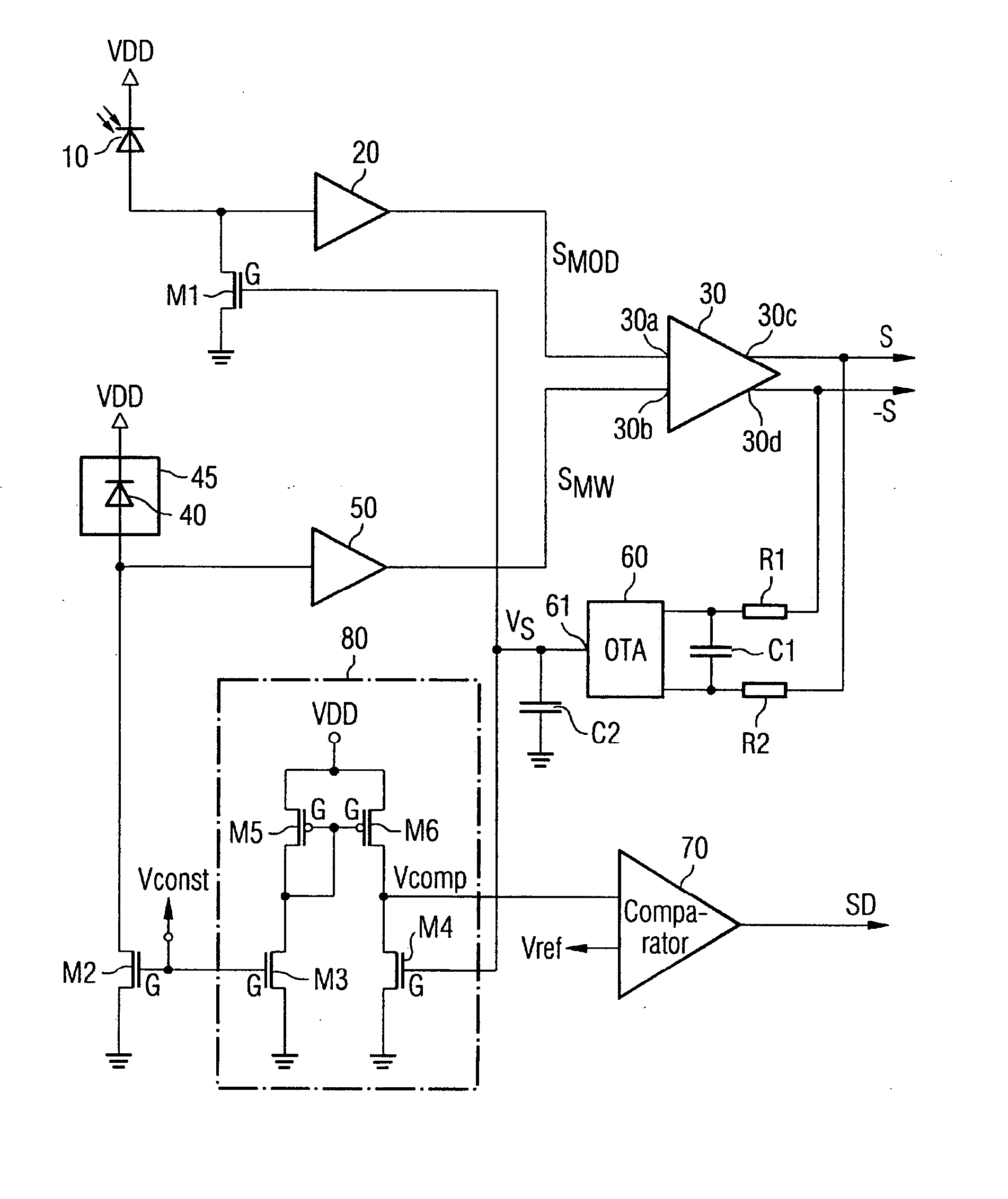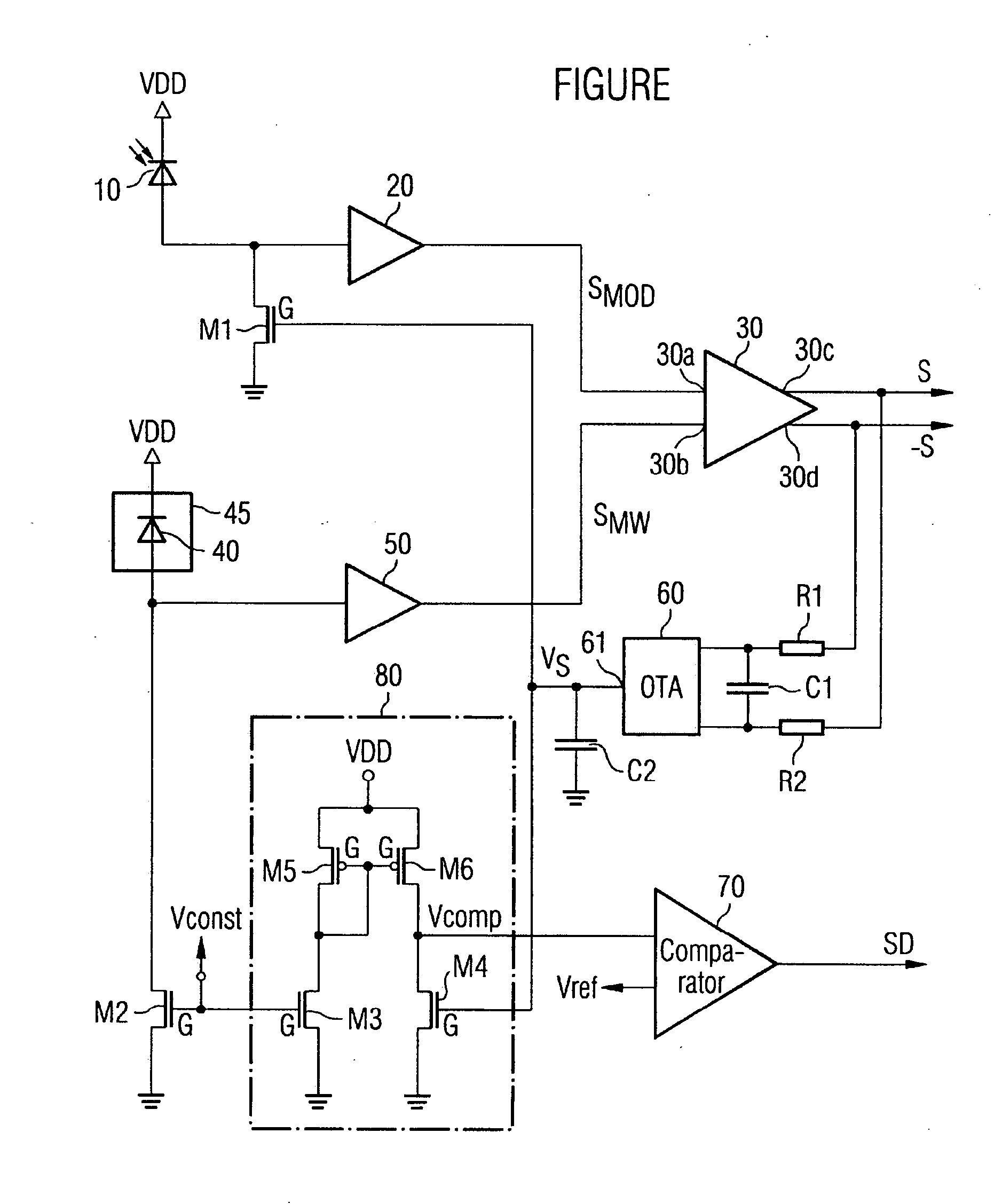Optical receiver circuit
a receiver circuit and optical receiver technology, applied in the direction of amplifiers with min 3 electrodes or 2 pn junctions, electromagnetic transmission, instruments, etc., can solve the problem of negligible error of finite extinction rate in most systems, and achieve the effect of low area requirement and current consumption
- Summary
- Abstract
- Description
- Claims
- Application Information
AI Technical Summary
Benefits of technology
Problems solved by technology
Method used
Image
Examples
Embodiment Construction
[0025] The receiver circuit has a first optoelectronic transducer 10 in the form of a photodiode, which converts an optical information signal into an electrical signal. The electrical signal is amplified in an input amplifier or preamplifier 20 and supplied to one input 30a of a postamplifier 30, which is a differential amplifier. The preamplifier 20 is preferably a transimpedance amplifier comprising a voltage amplifier and a negative feedback resistor (not illustrated in any more detail).
[0026] At the input of the preamplifier 20, a constant current of a regulatable current source, which is provided by a field effect transistor M1, is superposed on the essentially rectangular-waveform output signal of the photodiode 10. The current source M1 is regulated via the gate voltage present at the transistor M1. Instead of a field effect transistor, a bipolar transistor may, however, in principle also be used at this point and even otherwise in the circuit.
[0027] The current source M1 ...
PUM
 Login to View More
Login to View More Abstract
Description
Claims
Application Information
 Login to View More
Login to View More - R&D
- Intellectual Property
- Life Sciences
- Materials
- Tech Scout
- Unparalleled Data Quality
- Higher Quality Content
- 60% Fewer Hallucinations
Browse by: Latest US Patents, China's latest patents, Technical Efficacy Thesaurus, Application Domain, Technology Topic, Popular Technical Reports.
© 2025 PatSnap. All rights reserved.Legal|Privacy policy|Modern Slavery Act Transparency Statement|Sitemap|About US| Contact US: help@patsnap.com


